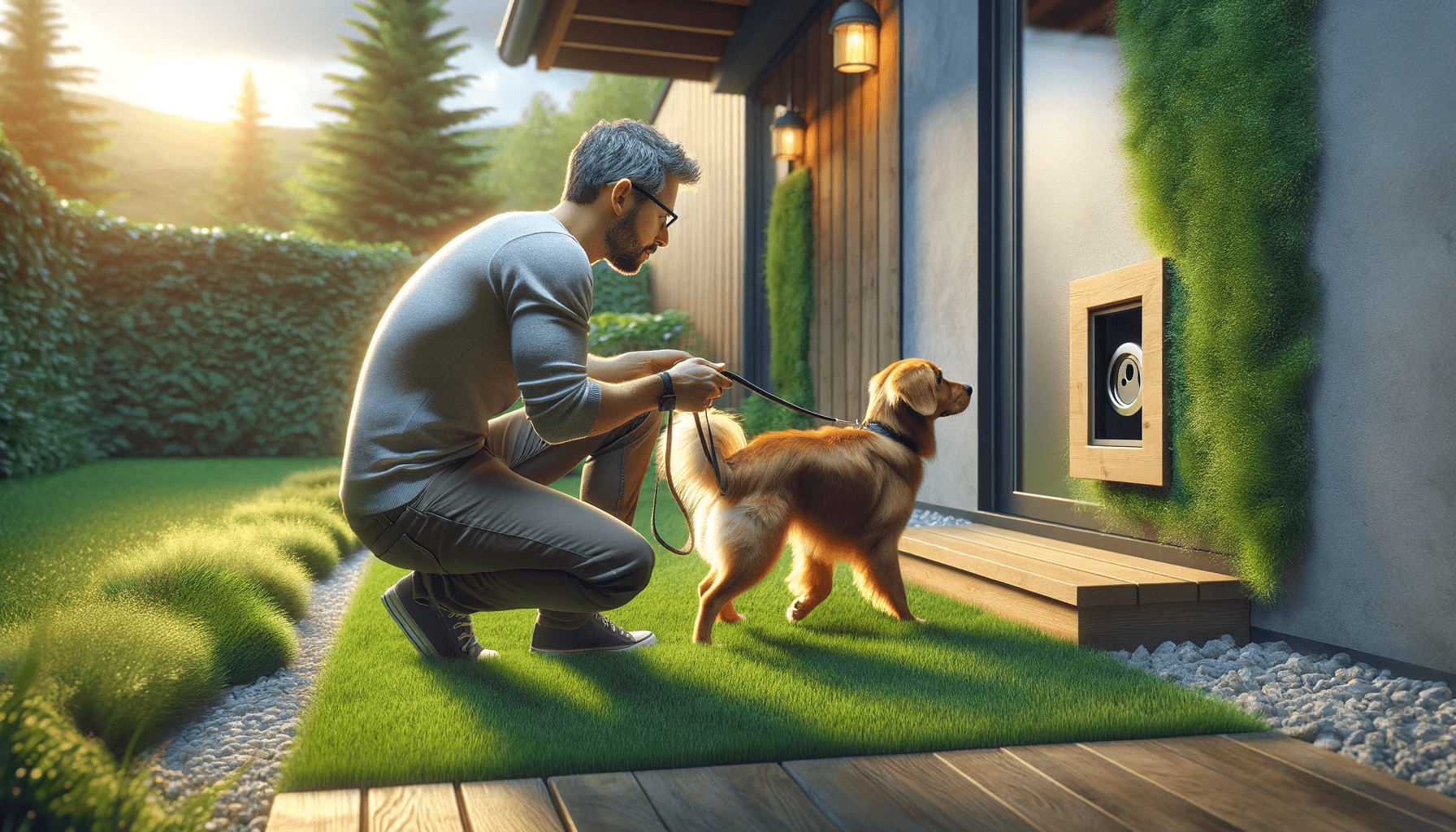Are you struggling to train your dog? In this article, we will answer commonly asked questions about dog obedience training.
Discover the benefits of obedience training and learn when to start training your furry friend.
We will also guide you in choosing the right training method and provide tips for successful training sessions.
Don't worry, we've got you covered with expert advice to make training your dog a breeze.
Key Takeaways
- Obedience training improves behavior and responsiveness.
- Training should start around 8 to 12 weeks old, but readiness varies for each dog.
- Positive reinforcement and clicker training are both effective methods.
- Common challenges in obedience training include stubbornness, distractions, and lack of motivation.
Benefits of Obedience Training
Obedience training can greatly improve your dog's behavior and responsiveness, as it provides consistent guidance and reinforces good habits. The advantages of obedience training are numerous and essential for a well-behaved and happy dog.
One of the primary benefits is that it establishes a clear line of communication between you and your furry friend. Through consistent training, your dog learns to understand and respond to your commands, making it easier to manage their behavior in various situations.
Consistency in training is crucial for effective obedience training. Dogs thrive on routine and predictability. By establishing consistent rules and expectations, you create a stable environment where your dog knows what's expected of them. Consistency helps reinforce good habits and prevent the development of unwanted behaviors. When you consistently reward your dog for positive behaviors and discourage negative ones, they learn what's acceptable and what's not.
Additionally, obedience training strengthens the bond between you and your dog. Training sessions provide opportunities for quality time together, fostering trust and mutual understanding. It also gives you the confidence to handle your dog in different situations, such as walking on a leash, greeting visitors, or participating in social activities.
When to Start Training Your Dog
To establish a strong foundation for obedience training, it's important to start training your dog at a young age. The appropriate age for starting dog training varies depending on the breed and individual dog, but most experts recommend beginning basic obedience training when your dog is around 8 to 12 weeks old. At this age, puppies are more receptive to learning and can start to understand basic commands.
However, it's essential to keep in mind that every dog is different, and their readiness for training may vary. Signs that your dog is ready for obedience training include being able to focus and pay attention to you, having a basic understanding of their name, and displaying a willingness to learn and engage with you. Additionally, if your dog exhibits behaviors such as chewing, biting, or excessive barking, obedience training can help address these issues.
Choosing the Right Training Method
Finding the appropriate training method for your dog can greatly impact the success of their obedience training. When it comes to choosing the right training method, two popular options are positive reinforcement and clicker training.
Positive reinforcement involves rewarding your dog with treats, praise, or play for exhibiting desired behaviors. This method focuses on rewarding good behavior rather than punishing bad behavior. By using positive reinforcement, you can create a positive association in your dog's mind, making them more likely to repeat the desired behavior.
Clicker training is another effective method that uses a clicker as a marker for correct behavior. The clicker is a small handheld device that makes a distinct clicking sound when pressed. By pairing the clicker with rewards, such as treats or praise, you can reinforce the desired behavior. The clicker serves as a clear and consistent signal to your dog that they've done something right.
Both positive reinforcement and clicker training can be highly effective in teaching your dog obedience. However, it's essential to choose the method that best suits your dog's personality and learning style. Experiment with different techniques and observe how your dog responds to determine which method works best for them.
Common Challenges in Obedience Training
When facing common challenges in dog obedience training, it's important to address them with patience and consistency. Training a stubborn dog can be a difficult task, but with the right approach, it's achievable.
Here are some common challenges you may encounter during obedience training and how to overcome them:
- Difficulties in training stubborn dogs: Some dogs have a strong-willed nature, making it challenging to get them to obey commands. To tackle this, use positive reinforcement techniques such as rewards and praise. Be firm and consistent in your commands, and avoid getting frustrated or giving up.
- Dealing with distractions during training sessions: Dogs can easily get distracted by their surroundings, which can hinder their ability to focus on training. To combat this, start training in a quiet and familiar environment, gradually increasing the level of distractions. Use high-value treats or toys to keep their attention and redirect their focus back to you.
- Inconsistency in training: Inconsistency can confuse your dog and make it harder for them to learn. Establish a consistent training routine and stick to it. Use the same commands and techniques consistently, and ensure that everyone involved in the training follows the same approach.
- Lack of motivation: Some dogs may lack motivation during training, making it challenging to keep them engaged. Find out what motivates your dog, whether it's treats, toys, or praise, and use it as a reward during training sessions. Make the training sessions short and fun to maintain their interest.
Tips for Successful Training Sessions
To ensure successful training sessions, follow these helpful tips.
First and foremost, utilize positive reinforcement techniques. Dogs respond best to rewards and praise when they exhibit desired behaviors. This can be in the form of treats, toys, or verbal praise. By focusing on rewarding good behavior rather than punishing bad behavior, you create a positive and enjoyable learning environment for your dog.
Another crucial aspect of successful training is maintaining consistency. Dogs thrive on routine, so it's important to establish a consistent training schedule. Set aside regular training sessions each day and stick to them. Consistency also applies to the commands and cues you use. Use the same words and hand signals for each behavior, so your dog learns to associate them correctly.
Additionally, consistency extends to everyone involved in the training process. Make sure that all family members or anyone interacting with the dog follows the same training techniques and rules. This avoids confusion for the dog and ensures that they receive consistent messages and expectations.
Frequently Asked Questions
How Long Does It Take to Fully Train a Dog?
Training a dog: Factors that can affect the duration of the training process include breed, age, and previous experiences. However, with consistent effort and positive reinforcement, you can keep your dog motivated during obedience training.
Can Older Dogs Be Trained?
Training older dogs has its benefits, such as strengthening the bond between you and your furry friend. However, it can also present challenges due to ingrained habits. Consistency, patience, and positive reinforcement are key to successful obedience training.
What if My Dog Doesn't Respond to Any Training Method?
If your dog doesn't respond to traditional training methods, try alternative techniques like positive reinforcement or clicker training. Also, address any underlying behavioral issues that may be affecting their response.
Is It Necessary to Hire a Professional Dog Trainer for Obedience Training?
Hiring a professional dog trainer for obedience training has its pros and cons. They can provide expert guidance and save you time, but it can be costly. Self-training is an option, but it requires dedication and knowledge.
Are There Any Breeds That Are More Difficult to Train Than Others?
Some breeds can be more challenging to train than others due to their independent nature or high energy levels. It's important to be patient and consistent in your training approach to overcome these training difficulties.
Conclusion
In conclusion, dog obedience training is a beneficial and necessary step in ensuring a well-behaved and happy pet. Starting training early and choosing the right method are key to success.
While challenges may arise, with patience and consistency, they can be overcome. Remember to keep training sessions positive and rewarding for your furry friend.
By following these tips, you can have a well-trained and obedient dog that will bring joy to your life.






